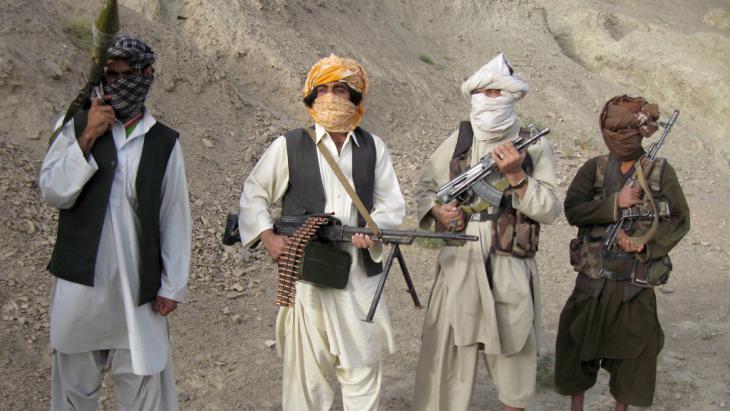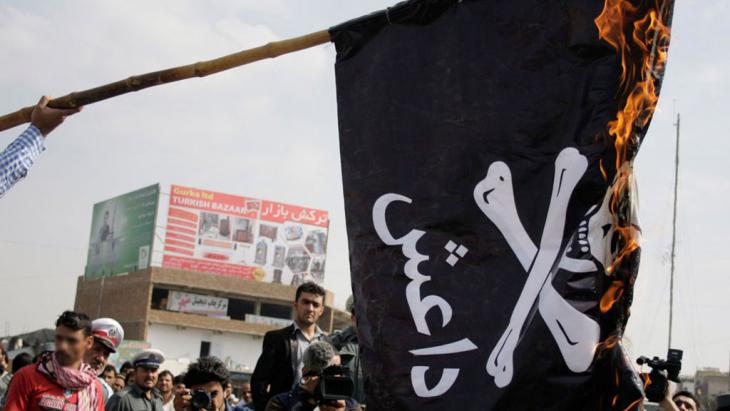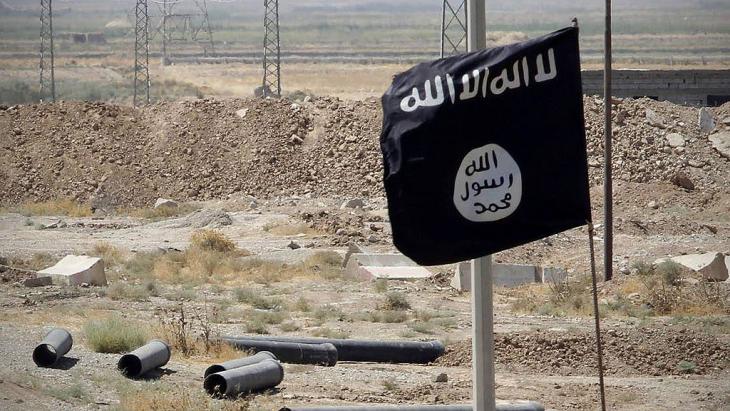One caliph too many

A few days ago, the former Taliban commander and ex-Guantanamo inmate Mullah Abdul Rauf Khadim was killed along with six others by a US drone in the southern Afghan province of Helmand. Drone attacks have become an everyday occurrence in Afghanistan, even though they are rarely reported on. In this case, however, the media were very keen to report on the incident. The reason being that Khadim was thought to be the "vice-governor" of the "Islamic State" (IS) in Afghanistan and to have recruited men on behalf of the self-appointed Caliph Abu Bakr al Baghdadi.
Over the past few weeks, a number of extremists in both Afghanistan and Pakistan have broken away from the Taliban and subsequently sworn allegiance to IS. They were led by Hafez Said Khan, a former leading member of the Pakistan Taliban (TTP). IS spokesman Abu Mohammad al-Adnani reacted by officially recognising the "province" (Arabic: "wilayah") of Khorasan as an enclave of "Islamic State" and appointing Khan as its governor.
The name Khorasan is a reference to the region's historical title. The region encompasses parts of present-day Afghanistan, Iran, Tajikistan, Uzbekistan and Turkmenistan. IS also includes in it the Pashtun tribal areas beyond the Durand Line, which Pakistan claims for itself.
IS activities have long been a thorn in the side of the Afghan Taliban. The two groupings have substantial differences – in terms of both ideology and political goals. Whereas IS is placed on the Salafi-Wahhabi spectrum, the Taliban regard themselves as followers of the Hanafi school of Islamic law. They also take different approaches to minorities and local customs. While IS murders Shia Muslims, persecutes Christians and blows up mosques and shrines, no such crimes have ever been pinned on the Taliban.

Inevitable confrontation
Furthermore, the Afghan Taliban operate solely in Afghanistan, while IS does not recognise borders. Even the TTP has always restricted its activities to Pakistan, concentrating above all on the Pashtun tribal areas. Now, however, the Pakistan Taliban have become almost entirely fragmented and disorganised. It was only as a consequence of this deterioration that a number of former members went over to IS.
Probably the key problem between the two groupings is the fact that both sides – both the "Islamic State" and the "Islamic Emirate Afghanistan" – have a leader who claims the title "Commander of the Faithful" (Arabic: "Amir al-Muminin") for himself. Yet both groupings are convinced there can only be one such leader. A confrontation was therefore inevitable.
The first direct confrontations between Taliban fighters and IS followers came several weeks ago in Helmand. A number of fighters were disarmed and taken prisoner by the Taliban, allegedly including Khadim. The differences between the rival Islamists reached an apex when Khadim spread the rumour that the Taliban leader Mullah Omar was no longer alive. He also called on the local population to follow him from now on.
Even during his time with the Taliban, there had been a lot of friction between Khadim, who converted to Salafism after his Guantanamo imprisonment, and the Taliban. After his release from the US prison camp on Cuban soil – it could not be proven that he had committed crimes against the United States – he came under the wing of the Taliban, like other former prisoners. As the differences between them escalated, they eventually wanted nothing more to do with him.
Nevertheless, the political analyst and Taliban expert Waheed Mozhdah assumes that the Taliban chief Mullah Mohammad Omar was not interested in violent conflict with the defectors. "Mullah Omar sent representatives to Helmand to persuade Khadim to revoke his oath of allegiance to IS. He saw the split as counterproductive," says Mozhdah. As Khadim is now dead, there is no way of knowing whether these negotiations were a success.

Exaggerated reporting
With its extremely low number of members, however, IS in Afghanistan does not seem to be a serious player, even though media reports present a very different picture, and parts of the Afghan population appear to be concerned.
"The media reports on IS activities are hugely exaggerated and have nothing to do with reality. The Afghan secret service in particular has a vested interest in sowing panic in the hope of reversing the withdrawal of international troops, so as to continue making money from foreign funding," Mozhdah adds.
The IS leadership in Raqqa, Syria, has yet to react to the death of its "governor". "Khadim's death could already spell the beginning of the end of the 'Islamic State' in its new 'province' of Khorasan," says Thomas Ruttig from the Afghanistan Analysts Network, for instance. Ruttig too regards some of the reporting as scaremongering. "In some provinces, Afghan army leaders are playing up the threat from IS to acquire additional resources," says Ruttig, a German expert on Afghanistan.
It is therefore rather unlikely that the "Islamic State" in Khorasan will grow any stronger. Even the self-proclaimed Kharijites never managed to gain a foothold in central Asia – the radical movement that spread across the Arab Peninsula and the Maghreb from the late seventh century and have frequently been compared with IS in recent times for their extremism.
Emran Feroz
© Qantara.de 2015
Translated from the German by Katy Derbyshire
